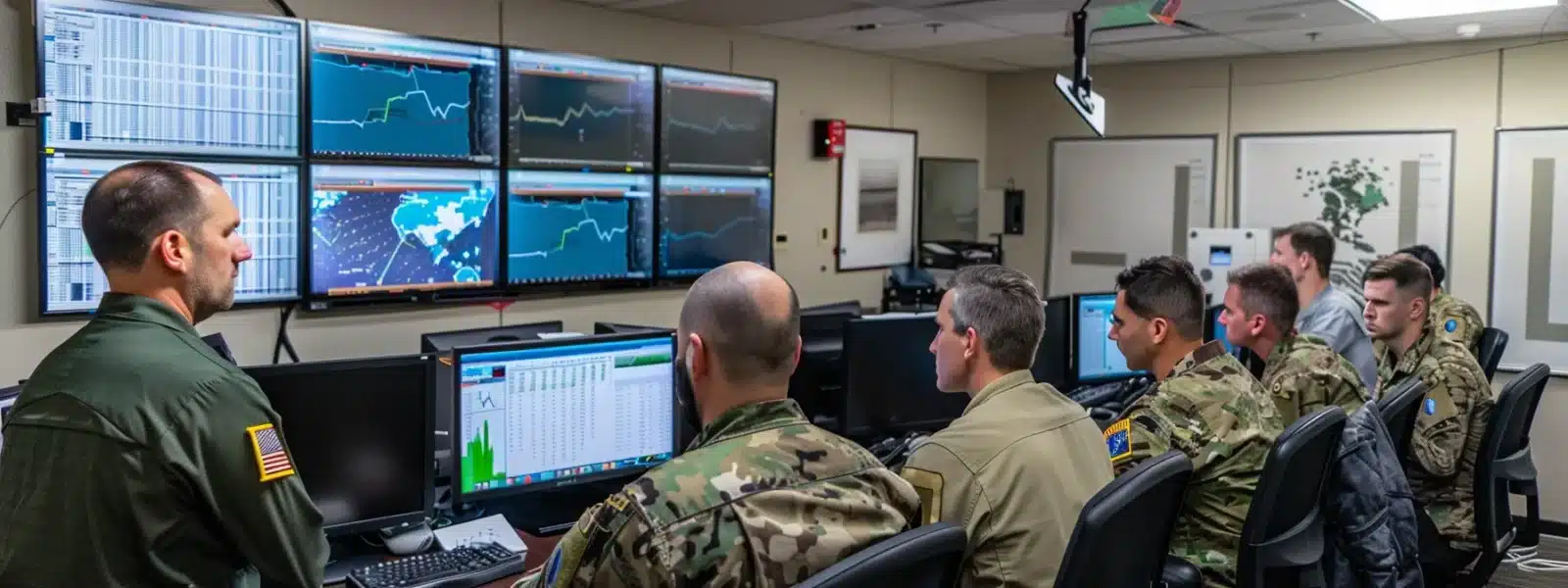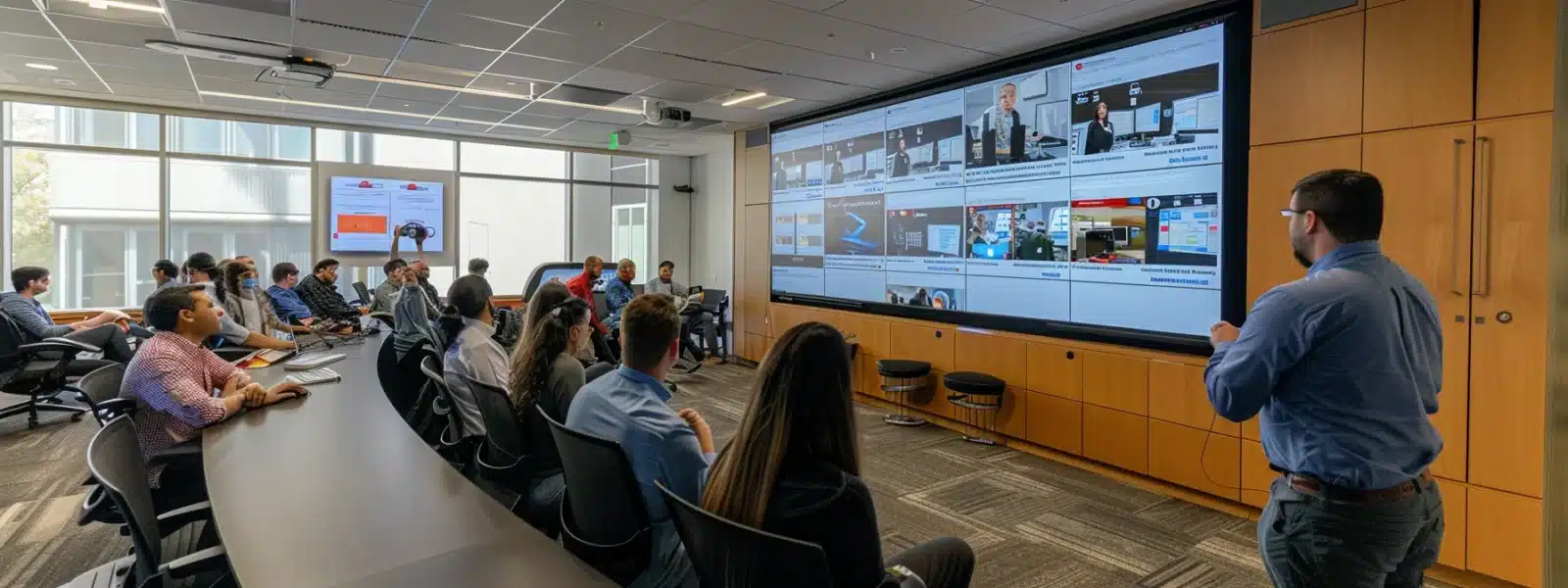Achieving CMMC compliance is a critical challenge for defense contractors in the aerospace sector. With the increasing focus on cybersecurity, understanding the CMMC framework and preparing for audits is essential. This article will outline key strategies, including assessing your current cybersecurity posture and implementing effective vulnerability management practices. By engaging with this content, readers will gain actionable insights to enhance their compliance efforts, ultimately safeguarding their operations and meeting the standards set by the National Institute of Standards and Technology.
Key Takeaways
- Understanding CMMC levels is essential for defense contractors to enhance cybersecurity practices
- Regular risk assessments help identify vulnerabilities and improve compliance with CMMC requirements
- Continuous monitoring and employee training are vital for maintaining a strong cybersecurity posture
- Engaging cross-functional teams fosters accountability and strengthens compliance efforts within organizations
- A comprehensive compliance plan ensures effective resource allocation and timely implementation of security measures
Understanding the CMMC Framework

Understanding the CMMC framework is crucial for defense contractors aiming to comply with new regulations. This section will cover the levels of CMMC certification, key components and requirements provided by cmmc consulting, and the differences between CMMC and previous standards. Additionally, it will highlight the significance of CMMC for defense contractors in relation to policies set by the Under Secretary of Defense for Acquisition and Sustainment and its impact on the supply chain.
Grasping the Levels of CMMC Certification
The Cybersecurity Maturity Model Certification (CMMC) consists of five distinct levels, each designed to enhance the cybersecurity posture of defense contractors. These levels range from basic cyber hygiene at Level 1 to advanced security practices at Level 5, which are essential for protecting classified information. Understanding these levels is vital for organizations preparing for a CMMC assessment, as each level has specific requirements that must be met to achieve certification.
At each level of CMMC certification, contractors must demonstrate increasing maturity in their cybersecurity practices. For instance, Level 1 focuses on basic safeguarding measures, while Level 3 requires the implementation of more comprehensive controls that align with the National Institute of Standards and Technology (NIST) guidelines. This structured approach not only helps organizations improve their cybersecurity capabilities but also fosters a culture of leadership and accountability in managing sensitive data.
Research indicates that many defense contractors struggle with the complexities of CMMC compliance, particularly when transitioning from previous standards like NIST SP 800-171. By grasping the levels of CMMC certification, organizations can better identify gaps in their current practices and develop targeted strategies to enhance their cybersecurity frameworks. This proactive approach not only prepares them for successful CMMC assessments but also strengthens their overall resilience against cyber threats.
Key Components and Requirements of CMMC
The key components of the CMMC framework are designed to ensure regulatory compliance for defense contractors handling sensitive information. Each level of certification requires specific practices that address various aspects of cybersecurity, including access control, incident response, and risk assessment. By implementing these components, organizations can effectively safeguard their intellectual property and sensitive data from potential vulnerabilities.
One of the critical requirements of CMMC is the need for a thorough risk assessment process. This involves identifying potential threats and vulnerabilities that could impact the organization’s operations and national security. By conducting regular assessments, defense contractors can proactively address weaknesses in their cybersecurity posture, ensuring they meet the stringent demands of the CMMC framework.
Furthermore, the CMMC framework emphasizes the importance of continuous monitoring and improvement of cybersecurity practices. Defense contractors must establish processes for reporting and responding to incidents, which is vital for maintaining compliance and protecting sensitive information. This ongoing commitment to cybersecurity not only enhances the organization’s resilience against cyber threats but also aligns with the expectations set forth by the national security agency, reinforcing the importance of safeguarding national interests.
Differences Between CMMC and Previous Standards
The Cybersecurity Maturity Model Certification (CMMC) introduces a more structured and comprehensive approach to cybersecurity compared to previous standards like NIST SP 800-171. While NIST provided guidelines for safeguarding controlled unclassified information, CMMC establishes a certification process that requires defense contractors to demonstrate their cybersecurity capabilities across five distinct levels. This shift emphasizes not only compliance but also the maturity of cybersecurity practices, which is essential for protecting critical infrastructure and sensitive data.
Another significant difference lies in the integration of the CMMC framework with the Code of Federal Regulations (CFR). CMMC aligns with federal requirements, ensuring that defense contractors meet the stringent demands set forth by the Department of Defense (DoD). This alignment enhances the accountability of contractors, as they must now undergo third-party assessments to achieve CMMC certification, a step that was not mandated under previous standards. This change aims to bolster the security of the supply chain and safeguard national interests.
Furthermore, CMMC places a greater emphasis on continuous monitoring and improvement of cybersecurity practices. Unlike earlier standards that primarily focused on documentation and self-assessment, CMMC requires organizations to actively manage and respond to cybersecurity incidents. This proactive approach not only helps defense contractors maintain compliance but also strengthens their overall cybersecurity posture, ensuring they are better equipped to defend against evolving threats to their infrastructure.
Significance of CMMC for Defense Contractors
The significance of the Cybersecurity Maturity Model Certification (CMMC) for defense contractors lies in its role as a framework for governance and compliance. By adhering to CMMC requirements, organizations can effectively manage risks associated with controlled unclassified information (CUI). This structured approach not only enhances their information security posture but also aligns with federal regulations, ensuring that contractors meet the expectations set by the Department of Defense.
Moreover, CMMC emphasizes the importance of risk management in safeguarding sensitive data. Defense contractors must implement robust practices that address potential vulnerabilities, thereby protecting their operations and national security interests. By prioritizing risk management, organizations can create a culture of accountability and resilience, which is essential in today’s complex cybersecurity landscape.
Ultimately, achieving CMMC certification is not just about compliance; it is a strategic advantage for defense contractors. Organizations that invest in CMMC readiness demonstrate their commitment to information security and their ability to protect critical infrastructure. This proactive stance not only builds trust with clients and partners but also positions them favorably in a competitive market where cybersecurity is paramount.
Assessing Your Current Cybersecurity Posture

Assessing the current cybersecurity posture is a critical step for defense contractors preparing for CMMC certification. This process involves conducting a thorough gap analysis to identify vulnerabilities in systems, reviewing existing security policies, and utilizing self-assessment tools effectively. By addressing these key areas, organizations can manage risk and complexity, ensuring they are well-prepared for evaluations by CMMC assessors.
Conducting a Thorough Gap Analysis
Conducting a thorough gap analysis is a fundamental step for defense contractors aiming to achieve CMMC readiness. This process involves evaluating current cybersecurity practices against the requirements outlined in the federal acquisition regulation. By identifying discrepancies between existing measures and CMMC standards, organizations can pinpoint areas that require improvement, ensuring they are well-prepared for compliance assessments.
In the manufacturing sector, where sensitive data and intellectual property are often at stake, a gap analysis can reveal critical vulnerabilities. For instance, contractors may discover that their incident response plans do not align with CMMC expectations, necessitating updates to enhance their cybersecurity posture. Addressing these gaps not only aids in compliance but also strengthens the overall security ecosystem, protecting valuable assets from potential threats.
To effectively conduct a gap analysis, organizations should utilize self-assessment tools and frameworks that align with CMMC requirements. This structured approach allows defense contractors to systematically evaluate their cybersecurity measures, prioritize necessary changes, and develop actionable strategies for improvement. By taking these steps, they can ensure a robust defense against cyber threats while meeting the stringent demands of the CMMC framework:
- Evaluate current cybersecurity practices against CMMC standards.
- Identify vulnerabilities specific to the manufacturing sector.
- Utilize self-assessment tools for systematic evaluation.
- Develop actionable strategies for compliance and improvement.
Identifying Vulnerabilities in Systems
Identifying vulnerabilities in systems is a critical component of preparing for CMMC certification. Defense contractors must conduct comprehensive assessments of their IT infrastructure to uncover weaknesses that could be exploited by cyber threats. This process involves reviewing software, hardware, and network configurations to ensure they align with CMMC requirements and best practices.
Organizations can utilize various tools and methodologies to identify vulnerabilities effectively. For instance, penetration testing and vulnerability scanning can reveal potential entry points for attackers. By regularly assessing their systems, defense contractors can stay ahead of emerging threats and ensure their cybersecurity measures are robust enough to protect sensitive information.
Moreover, it is essential for defense contractors to foster a culture of continuous improvement in cybersecurity practices. This includes training staff to recognize potential vulnerabilities and encouraging them to report any suspicious activities. By actively engaging employees in the cybersecurity process, organizations can enhance their overall security posture and better prepare for CMMC assessments:
| Assessment Method | Description | Benefits |
|---|---|---|
| Penetration Testing | Simulates cyber attacks to identify weaknesses. | Reveals critical vulnerabilities before they can be exploited. |
| Vulnerability Scanning | Automated tools scan systems for known vulnerabilities. | Provides a comprehensive overview of security gaps. |
| Employee Training | Educates staff on recognizing and reporting threats. | Enhances overall security awareness and response. |
Reviewing Existing Security Policies
Reviewing existing security policies is a fundamental step for defense contractors preparing for CMMC certification. Organizations must ensure that their policies align with the specific requirements of the CMMC framework, which emphasizes the need for robust cybersecurity practices. By conducting a thorough review, contractors can identify any gaps or outdated procedures that may hinder their compliance efforts.
It is essential for defense contractors to assess whether their current security policies adequately address the protection of controlled unclassified information (CUI). This includes evaluating access controls, incident response protocols, and risk management strategies. By updating these policies to reflect the latest CMMC standards, organizations can enhance their overall cybersecurity posture and better safeguard sensitive data.
Furthermore, engaging employees in the review process can foster a culture of security awareness within the organization. By encouraging staff to provide input on existing policies, defense contractors can gain valuable insights into potential weaknesses and areas for improvement. This collaborative approach not only strengthens security measures but also prepares the organization for the rigorous assessments required for CMMC certification.
Utilizing Self-Assessment Tools Effectively
Utilizing self-assessment tools effectively is a critical component for defense contractors preparing for CMMC certification. These tools provide organizations with a structured approach to evaluate their current cybersecurity practices against CMMC requirements. By leveraging these resources, contractors can identify gaps in their security measures and prioritize areas for improvement, ensuring they are well-prepared for compliance assessments.
Defense contractors should select self-assessment tools that align with the specific requirements of the CMMC framework. For instance, tools that offer comprehensive checklists and scoring systems can help organizations systematically assess their cybersecurity posture. By regularly utilizing these tools, contractors can track their progress over time and make informed decisions about necessary enhancements to their cybersecurity strategies.
Moreover, engaging team members in the self-assessment process fosters a culture of accountability and security awareness within the organization. By encouraging collaboration and input from various departments, defense contractors can gain valuable insights into potential vulnerabilities and develop actionable strategies for compliance. This collective effort not only strengthens the organization’s cybersecurity posture but also prepares them for the rigorous evaluations required for CMMC certification:
- Select self-assessment tools that align with CMMC requirements.
- Utilize comprehensive checklists and scoring systems for evaluation.
- Engage team members to foster accountability and security awareness.
Developing a Comprehensive Compliance Plan

Developing a comprehensive compliance plan is essential for defense contractors aiming for CMMC readiness. This involves setting clear compliance objectives, prioritizing security measures based on risk, and allocating resources and budget appropriately. Additionally, establishing a realistic implementation timeline ensures that organizations can effectively navigate the complexities of CMMC certification while enhancing their cybersecurity posture.
Setting Clear Compliance Objectives
Setting clear compliance objectives is a foundational step for defense contractors preparing for CMMC certification. These objectives should align with the specific requirements of the CMMC framework, ensuring that organizations understand what is necessary to achieve each level of certification. By defining measurable goals, contractors can create a roadmap that guides their compliance efforts and helps them track progress effectively.
To establish these objectives, defense contractors must assess their current cybersecurity posture and identify areas that require improvement. For example, if a contractor recognizes that their incident response plan is lacking, they can set a clear objective to develop and implement a comprehensive plan within a specified timeframe. This targeted approach not only addresses immediate compliance needs but also enhances the overall security framework of the organization.
Moreover, involving key stakeholders in the objective-setting process fosters a sense of ownership and accountability. By engaging team members from various departments, organizations can ensure that compliance objectives are realistic and achievable. This collaborative effort not only strengthens the commitment to CMMC readiness but also promotes a culture of security awareness throughout the organization, ultimately leading to a more resilient cybersecurity posture.
Prioritizing Security Measures Based on Risk
Prioritizing security measures based on risk is a critical component of developing a comprehensive compliance plan for CMMC readiness. Defense contractors must first conduct a thorough risk assessment to identify potential vulnerabilities within their systems. By understanding which assets are most at risk, organizations can allocate resources effectively to address the most pressing security concerns.
Once risks are identified, contractors should categorize them based on their potential impact on operations and national security. For example, if a contractor discovers that their data storage systems are susceptible to breaches, they should prioritize implementing stronger access controls and encryption measures. This targeted approach not only enhances compliance with CMMC requirements but also fortifies the organization’s overall cybersecurity posture.
Establishing a risk-based prioritization framework allows defense contractors to make informed decisions about their cybersecurity investments. By focusing on high-risk areas, organizations can ensure that their compliance efforts yield the greatest return on investment. This strategic alignment of security measures with risk assessment results ultimately leads to a more resilient and compliant organization:
- Conduct a thorough risk assessment to identify vulnerabilities.
- Categorize risks based on potential impact on operations.
- Implement targeted security measures for high-risk areas.
- Establish a risk-based prioritization framework for informed decision-making.
Allocating Resources and Budget Appropriately
Allocating resources and budget appropriately is a critical aspect of developing a comprehensive compliance plan for CMMC readiness. Defense contractors must assess their current financial and human resources to ensure they can meet the stringent requirements of the CMMC framework. This involves identifying key areas that require investment, such as cybersecurity tools, training programs, and personnel dedicated to compliance efforts.
Organizations should prioritize their budget based on the results of their risk assessments. For instance, if a contractor identifies that their data protection measures are lacking, they should allocate funds to enhance encryption technologies and access controls. By strategically directing resources toward high-risk areas, defense contractors can effectively bolster their cybersecurity posture while ensuring compliance with CMMC standards.
Furthermore, it is essential for defense contractors to engage in ongoing evaluation of their resource allocation. Regularly reviewing the effectiveness of their investments allows organizations to make informed adjustments as needed. This proactive approach not only ensures that compliance efforts remain aligned with CMMC requirements but also enhances the overall resilience of the organization against cyber threats:
| Resource Type | Purpose | Example Investment |
|---|---|---|
| Cybersecurity Tools | Enhance data protection | Encryption software |
| Training Programs | Educate staff on security practices | Workshops on incident response |
| Compliance Personnel | Oversee CMMC readiness | Hiring a compliance officer |
Establishing a Realistic Implementation Timeline
Establishing a realistic implementation timeline is crucial for defense contractors preparing for CMMC certification. This timeline should account for the specific requirements of each CMMC level, allowing organizations to allocate sufficient time for necessary improvements in their cybersecurity practices. By breaking down the compliance process into manageable phases, contractors can ensure that they meet deadlines without compromising the quality of their security measures.
To create an effective timeline, defense contractors should first assess their current cybersecurity posture and identify the gaps that need to be addressed. For example, if a contractor recognizes that their incident response plan requires significant updates, they should allocate adequate time for development, testing, and training. This proactive approach not only facilitates compliance but also enhances the organization’s overall cybersecurity readiness.
Moreover, engaging key stakeholders in the timeline development process fosters accountability and ensures that all departments are aligned with compliance goals. By setting milestones and regularly reviewing progress, organizations can adapt their strategies as needed, addressing any unforeseen challenges that may arise. This collaborative effort ultimately leads to a more efficient path toward achieving CMMC readiness, reinforcing the contractor’s commitment to safeguarding sensitive information.
Implementing Essential Security Controls

Implementing essential security controls is vital for defense contractors striving for CMMC readiness. This section will cover enhancing access controls and authentication to safeguard sensitive information, securing network infrastructure against potential threats, and protecting data through encryption. Additionally, training employees on cybersecurity practices will be emphasized to foster a culture of security awareness. Each of these strategies plays a crucial role in achieving compliance and strengthening overall cybersecurity posture.
Enhancing Access Controls and Authentication
Enhancing access controls and authentication is a fundamental aspect of achieving CMMC readiness for defense contractors. Organizations must implement robust access control measures to ensure that only authorized personnel can access sensitive information. This includes utilizing role-based access controls (RBAC) that limit access based on an individual’s job responsibilities, thereby minimizing the risk of unauthorized data exposure.
In addition to RBAC, employing multi-factor authentication (MFA) significantly strengthens security by requiring users to provide multiple forms of verification before gaining access to critical systems. This added layer of security is essential in protecting controlled unclassified information (CUI) from potential breaches. By integrating MFA into their access control strategies, defense contractors can effectively reduce the likelihood of unauthorized access and enhance their overall cybersecurity posture.
Regularly reviewing and updating access controls is also crucial for maintaining compliance with CMMC requirements. Organizations should conduct periodic audits to assess the effectiveness of their access control measures and make necessary adjustments based on evolving threats and business needs. By fostering a culture of continuous improvement in access management, defense contractors can ensure they remain vigilant against cyber threats while safeguarding sensitive data.
Securing Network Infrastructure
Securing network infrastructure is a critical component for defense contractors aiming for CMMC readiness. Organizations must implement firewalls and intrusion detection systems to monitor and protect their networks from unauthorized access and potential cyber threats. By establishing these security measures, contractors can create a robust defense against attacks that could compromise sensitive information.
Regular network assessments are essential for identifying vulnerabilities within the infrastructure. Defense contractors should conduct penetration testing and vulnerability scans to uncover weaknesses that could be exploited by cyber adversaries. This proactive approach not only helps in fortifying the network but also ensures compliance with CMMC requirements, ultimately safeguarding controlled unclassified information (CUI).
Additionally, maintaining up-to-date software and hardware is vital for securing network infrastructure. Organizations should implement patch management processes to ensure that all systems are current with the latest security updates. By prioritizing these practices, defense contractors can enhance their cybersecurity posture and demonstrate their commitment to protecting sensitive data in alignment with CMMC standards:
| Security Measure | Description | Benefits |
|---|---|---|
| Firewalls | Control incoming and outgoing network traffic. | Prevents unauthorized access to sensitive data. |
| Intrusion Detection Systems | Monitor network traffic for suspicious activity. | Identifies potential threats in real-time. |
| Patch Management | Regularly updates software and hardware. | Reduces vulnerabilities and enhances security. |
Protecting Data Through Encryption
Protecting data through encryption is a fundamental strategy for defense contractors seeking CMMC readiness. Encryption transforms sensitive information into a secure format that can only be accessed by authorized users with the correct decryption keys. This process is essential for safeguarding controlled unclassified information (CUI) from unauthorized access and potential breaches, thereby enhancing overall cybersecurity posture.
Implementing encryption protocols not only aligns with CMMC requirements but also mitigates risks associated with data breaches. For instance, contractors can utilize encryption for data at rest and in transit, ensuring that sensitive information remains protected whether stored on servers or transmitted over networks. By adopting strong encryption standards, organizations can demonstrate their commitment to data security and compliance with federal regulations.
Moreover, regular audits of encryption practices are vital for maintaining compliance and effectiveness. Defense contractors should assess their encryption methods to ensure they meet industry standards and adapt to evolving threats. By fostering a culture of continuous improvement in data protection strategies, organizations can better safeguard their sensitive information and enhance their readiness for CMMC certification.
Training Employees on Cybersecurity Practices
Training employees on cybersecurity practices is a critical component for defense contractors striving for CMMC readiness. Organizations must ensure that all staff members understand the importance of cybersecurity and their role in protecting sensitive information. Regular training sessions can help employees recognize potential threats, such as phishing attacks, and empower them to respond appropriately.
Effective training programs should include practical examples and real-world scenarios that illustrate the consequences of security breaches. For instance, contractors can simulate phishing attempts to help employees identify suspicious emails. This hands-on approach not only enhances awareness but also fosters a culture of security within the organization, making everyone a part of the cybersecurity solution.
Moreover, ongoing education is essential to keep employees informed about the latest cybersecurity trends and threats. Defense contractors should implement refresher courses and updates on new security protocols to ensure that their workforce remains vigilant. By prioritizing employee training, organizations can significantly reduce the risk of security incidents and enhance their overall compliance with CMMC requirements:
- Conduct regular training sessions on cybersecurity awareness.
- Utilize real-world scenarios to illustrate potential threats.
- Implement ongoing education to keep staff updated on new protocols.
Preparing for the CMMC Assessment

Preparing for the CMMC assessment involves several critical steps to ensure compliance and readiness. First, selecting an accredited third-party assessor is essential for a credible evaluation. Next, organizing required documentation helps streamline the assessment process. Conducting internal pre-assessments allows organizations to identify and address compliance gaps before the official evaluation. Each of these strategies plays a vital role in achieving CMMC readiness and enhancing overall cybersecurity posture.
Selecting an Accredited Third-Party Assessor
Selecting an accredited third-party assessor is a critical step for defense contractors preparing for the CMMC assessment. Organizations should prioritize assessors who are certified by the CMMC Accreditation Body, ensuring they possess the necessary expertise and understanding of the CMMC framework. This selection process not only enhances the credibility of the assessment but also provides contractors with valuable insights into their compliance status.
It is essential for defense contractors to conduct thorough research on potential assessors, including reviewing their experience and client testimonials. Engaging with assessors who have a proven track record in the defense sector can significantly benefit organizations, as these professionals are familiar with the unique challenges faced by contractors. By choosing the right assessor, organizations can ensure a smoother assessment process and gain actionable recommendations for improving their cybersecurity posture.
Furthermore, establishing clear communication with the selected assessor is vital for a successful evaluation. Contractors should discuss their specific needs and expectations upfront, allowing the assessor to tailor their approach accordingly. This collaborative effort not only fosters a productive relationship but also ensures that the assessment aligns with the contractor’s goals for achieving CMMC compliance:
| Key Considerations | Description |
|---|---|
| Accreditation | Ensure the assessor is certified by the CMMC Accreditation Body. |
| Experience | Review the assessor’s experience in the defense sector. |
| Communication | Establish clear communication regarding needs and expectations. |
Organizing Required Documentation
Organizing required documentation is a critical step for defense contractors preparing for the CMMC assessment. This process involves compiling all necessary policies, procedures, and evidence that demonstrate compliance with the CMMC framework. By ensuring that documentation is complete and easily accessible, organizations can streamline the assessment process and reduce the likelihood of delays or complications during the evaluation.
Defense contractors should categorize their documentation based on the specific requirements of each CMMC level. For example, Level 1 may require basic security policies, while higher levels necessitate more detailed evidence of risk management and incident response plans. By aligning documentation with CMMC standards, organizations can effectively showcase their cybersecurity practices and readiness for the assessment.
Additionally, maintaining an organized documentation system allows for ongoing updates and improvements. Regularly reviewing and revising documents ensures that they reflect the latest practices and compliance requirements. This proactive approach not only prepares defense contractors for the CMMC assessment but also fosters a culture of accountability and continuous improvement within the organization:
| Documentation Type | Description | Importance |
|---|---|---|
| Security Policies | Documents outlining cybersecurity practices. | Demonstrates compliance with CMMC requirements. |
| Incident Response Plans | Procedures for addressing security incidents. | Essential for higher-level CMMC certification. |
| Risk Assessments | Evaluations of potential vulnerabilities. | Supports proactive risk management efforts. |
Conducting Internal Pre-Assessments
Conducting internal pre-assessments is a vital step for defense contractors preparing for the CMMC assessment. This process allows organizations to evaluate their current cybersecurity practices against the CMMC requirements, identifying any gaps that need to be addressed. By performing these assessments, contractors can proactively manage compliance risks and enhance their overall cybersecurity posture.
During an internal pre-assessment, defense contractors should review their existing policies, procedures, and security controls. This includes evaluating incident response plans, access controls, and risk management strategies to ensure they align with CMMC standards. By identifying discrepancies early, organizations can implement necessary changes and avoid potential setbacks during the official assessment.
Furthermore, engaging team members from various departments in the pre-assessment process fosters a culture of accountability and security awareness. This collaborative approach not only strengthens the organization’s compliance efforts but also prepares them for the rigorous evaluations required for CMMC certification. A well-structured internal pre-assessment can significantly improve readiness and confidence ahead of the official assessment:
| Pre-Assessment Activity | Description | Benefits |
|---|---|---|
| Policy Review | Evaluate existing cybersecurity policies for alignment with CMMC. | Identifies gaps and areas for improvement. |
| Control Assessment | Assess security controls and incident response plans. | Ensures readiness for compliance evaluation. |
| Team Engagement | Involve various departments in the assessment process. | Promotes accountability and security awareness. |
Addressing Compliance Gaps Before Assessment
Addressing compliance gaps before the CMMC assessment is essential for defense contractors to ensure readiness and confidence during the evaluation process. Organizations should conduct a thorough review of their existing cybersecurity practices against the CMMC requirements, identifying any discrepancies that could hinder compliance. By proactively addressing these gaps, contractors can enhance their overall cybersecurity posture and demonstrate their commitment to safeguarding sensitive information.
One effective strategy for closing compliance gaps involves engaging cross-functional teams within the organization. By involving various departments, such as IT, legal, and operations, contractors can gain diverse perspectives on potential vulnerabilities and areas for improvement. This collaborative approach not only fosters a culture of accountability but also ensures that all aspects of the organization are aligned with CMMC standards, ultimately leading to a more robust compliance framework.
Additionally, defense contractors should prioritize the implementation of necessary changes based on the findings from their gap analysis. For instance, if a contractor identifies weaknesses in their incident response plan, they should take immediate steps to develop and test a comprehensive strategy. By addressing these compliance gaps ahead of the assessment, organizations can significantly improve their chances of achieving CMMC certification and reinforce their commitment to cybersecurity best practices.
Maintaining Compliance and Continuous Improvement

Maintaining compliance and continuous improvement is vital for defense contractors striving for CMMC readiness. This involves regularly monitoring security systems to detect vulnerabilities, updating policies to address new threats, and staying informed about CMMC updates and changes. Additionally, promoting a culture of cybersecurity awareness among employees ensures that organizations remain proactive in safeguarding sensitive information.
Regularly Monitoring Security Systems
Regularly monitoring security systems is a critical practice for defense contractors aiming to achieve and maintain CMMC compliance. This ongoing vigilance allows organizations to detect vulnerabilities and potential threats in real-time, ensuring that their cybersecurity measures remain effective against evolving risks. By implementing automated monitoring tools, contractors can streamline this process, enabling them to focus on addressing issues as they arise rather than reacting after a breach occurs.
Incorporating continuous monitoring into cybersecurity strategies not only enhances compliance with CMMC requirements but also fosters a proactive security culture within the organization. For instance, defense contractors can establish protocols for regular system audits and vulnerability assessments, which help identify weaknesses before they can be exploited. This approach not only safeguards sensitive information but also builds trust with clients and partners, demonstrating a commitment to robust cybersecurity practices.
Furthermore, staying informed about the latest cybersecurity threats and trends is essential for effective monitoring. Defense contractors should engage in ongoing training and education for their IT teams, ensuring they are equipped with the knowledge to respond to new challenges. By prioritizing regular monitoring and continuous improvement, organizations can enhance their overall cybersecurity posture, ultimately supporting their CMMC readiness and protecting their critical assets.
Updating Policies to Reflect New Threats
Updating policies to reflect new threats is essential for defense contractors striving for CMMC compliance. As cyber threats evolve, organizations must regularly review and revise their cybersecurity policies to address emerging risks effectively. This proactive approach ensures that contractors remain aligned with CMMC requirements and can safeguard sensitive information against potential breaches.
Organizations should incorporate lessons learned from recent security incidents into their policy updates. For instance, if a contractor experiences a phishing attack, it is crucial to revise incident response protocols and employee training programs to mitigate similar risks in the future. By continuously adapting policies based on real-world experiences, defense contractors can enhance their overall cybersecurity posture and demonstrate their commitment to compliance.
Furthermore, engaging employees in the policy review process fosters a culture of security awareness and accountability. By encouraging team members to provide input on potential vulnerabilities and necessary updates, organizations can create more comprehensive and effective policies. This collaborative effort not only strengthens compliance with CMMC standards but also empowers employees to take an active role in protecting sensitive data.
Keeping Abreast of CMMC Updates and Changes
Keeping abreast of CMMC updates and changes is essential for defense contractors committed to maintaining compliance and enhancing their cybersecurity posture. The CMMC framework is subject to periodic revisions, and staying informed about these updates ensures that organizations can adapt their practices accordingly. By regularly reviewing official communications from the CMMC Accreditation Body and the Department of Defense, contractors can remain aligned with the latest requirements and expectations.
Defense contractors should also consider participating in industry forums and webinars focused on CMMC compliance. These platforms provide valuable insights from experts and peers, allowing organizations to share experiences and best practices. Engaging in these discussions not only helps contractors understand the implications of new regulations but also fosters a community of support that can be beneficial during the compliance journey.
Additionally, establishing a dedicated compliance team can significantly enhance an organization’s ability to monitor CMMC updates effectively. This team can be responsible for tracking changes, assessing their impact on current practices, and implementing necessary adjustments. By prioritizing this proactive approach, defense contractors can ensure they are not only compliant but also positioned as leaders in cybersecurity within the defense sector.
Promoting a Culture of Cybersecurity Awareness
Promoting a culture of cybersecurity awareness is essential for defense contractors striving for CMMC compliance. Organizations should prioritize training programs that educate employees about the importance of safeguarding sensitive information and recognizing potential threats. By fostering an environment where cybersecurity is a shared responsibility, contractors can significantly reduce the risk of security incidents and enhance their overall compliance posture.
Regular communication about cybersecurity practices and updates is vital in maintaining awareness among staff. Defense contractors can implement ongoing training sessions that include real-world scenarios, helping employees understand the implications of their actions on the organization’s security. This proactive approach not only empowers employees to take ownership of their cybersecurity responsibilities but also reinforces the importance of adhering to CMMC requirements.
Engaging employees in cybersecurity initiatives can further strengthen the organization‘s defenses. For instance, contractors can encourage staff to participate in security drills and provide feedback on existing policies. This collaborative effort not only enhances the organization‘s security measures but also cultivates a culture of vigilance, ensuring that all team members are equipped to contribute to the defense against cyber threats.
Conclusion
Mastering CMMC readiness is crucial for defense contractors to safeguard sensitive information and comply with federal regulations. By understanding the CMMC framework, conducting thorough assessments, and implementing essential security controls, organizations can enhance their cybersecurity posture and mitigate risks. Engaging employees in continuous training and fostering a culture of security awareness further strengthens defenses against cyber threats. Ultimately, achieving CMMC certification not only demonstrates a commitment to information security but also positions contractors favorably in a competitive market.




